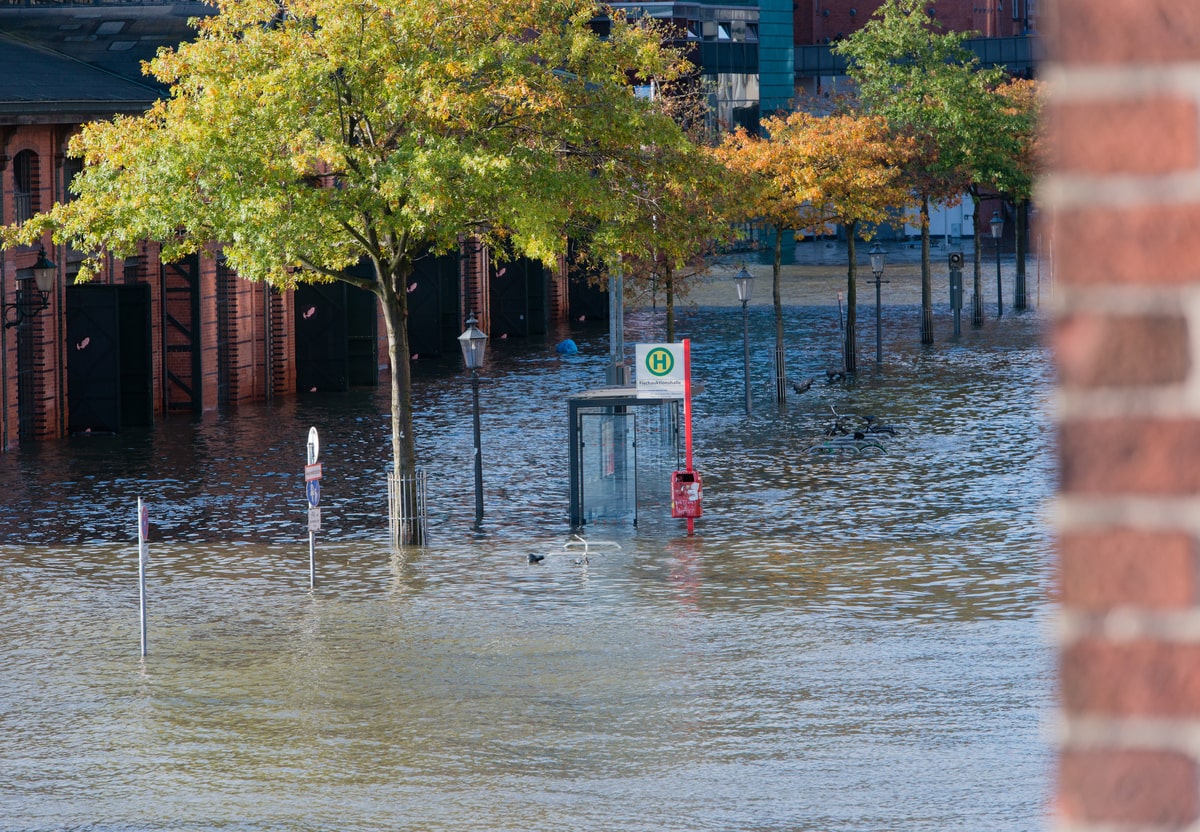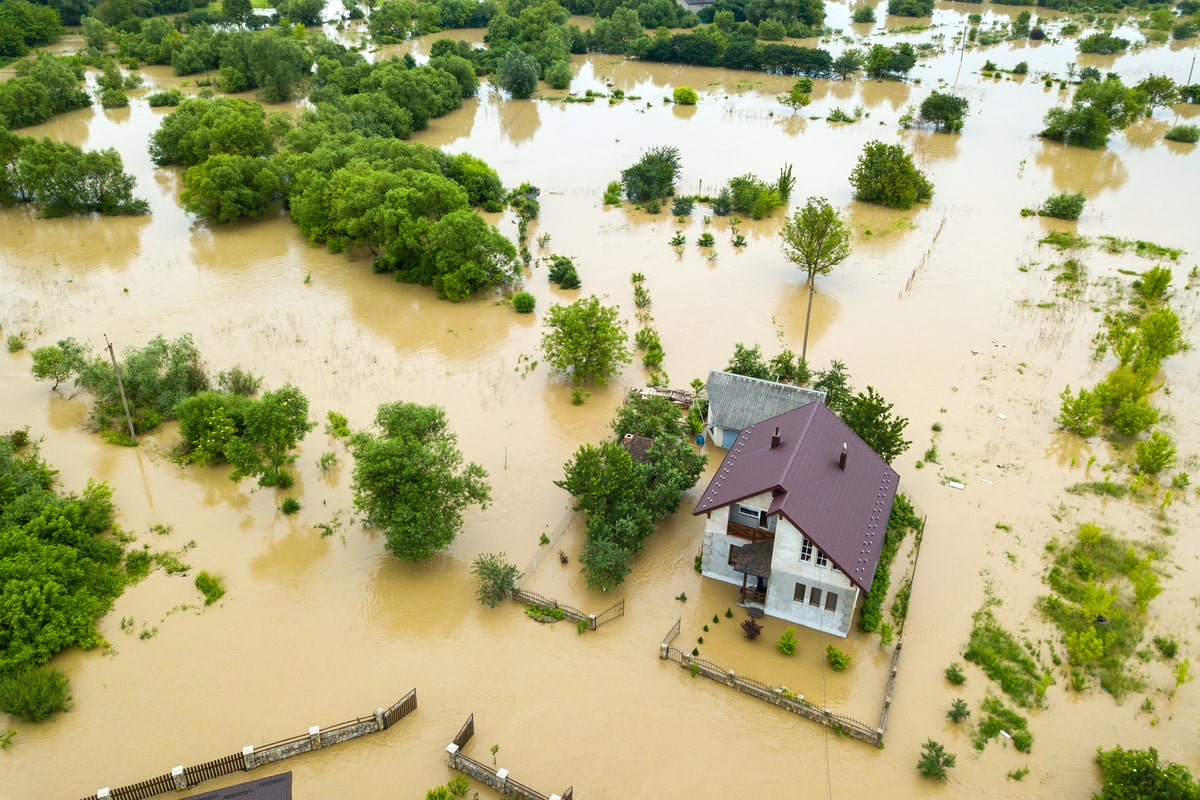Navigating Flood Claim Supplements: Getting Paid for the Full Scope

The devastation left by a flood can be overwhelming–and for many, the emotional toll is compounded by the mountain of paperwork required to be fairly compensated for the work that needs to be done.
Unclear line items and overlooked damages can make navigating flood damage claims feel like a second flood in itself.
This guide is here to help you take control of the process, avoid headaches and underpayment, and get properly reimbursed for every bit of necessary work.
Why Flood Claim Supplements Are Different (and More Complex)
It’s clear how floods differ from regular water damage, as it is not nearly the same to experience the damage done by the water coming from the ground up from overflowing rivers, heavy rainfall accumulation, or storm surges, as it is to remedy the consequences caused by, say, a burst pipe.
However, a key difference is that cases like the second one are usually covered under standard homeowners or property insurance, while most of them do not include flood coverage.
This is something that usually demands a separate purchase, often through the National Flood Insurance Program (NFIP), which is handled through FEMA, or private carriers.
It’s not rare for contractors to find themselves in a confusing situation when a property owner assumes their policy covers all forms of water damage. This distinction affects whether the damage can be claimed at all and how, regardless of how extensive the damage is.
What Leads to a Denied Flood Damage Claim?
Some common pain points contractors face with claims for flood damage can include:
- Strict limitations in flood policies (coverage often limited to structural elements and not contents or finishes);
- Ambiguity in damage origin (improperly documented claim may be denied);
- Slow processing through FEMA (when FEMA steps in for NFIP, reimbursement may be delayed, sometimes even for months);
- Interior work disputes (drywall, insulation, flooring, etc., sometimes only partially covered).
How to Claim Insurance for Flood Damage?
Supplementing becomes essential to cover what’s missed or underpaid in a flood damage insurance claim. Even when the damage is clear, it’s not always clear who pays for what.
Some interior damages might fall under the original policy, while others may need to be pushed through a supplement. In disaster zones, FEMA might offer aid, but that’s different from an insurance claim, and the reimbursement is typically lower.
As a contractor, you shouldn’t have to worry about what you’re entitled to charge, but lean on the help of supplement experts to navigate these complex boundaries.
Why would you risk covering flood damage costs out of your pocket, or damaging your reputation with clients due to insurance shortfalls forcing you to perform incomplete repairs?
Working with a supplement specialist who understands policy limitations, FEMA overlaps, and the documentation standards insurers demand can mean the difference between a denied flood damage claim and a fully paid job.
What Adjusters May Miss in Flood Claims
As flood claims adjusters often assess damage under time pressure or in disaster zones, their focus tends to be on the visible, surface-level damage. However, contractors’ experience shows that the real issues frequently lie beneath, both literally and figuratively. It is precisely these hidden damages that can significantly impact the repair scope and costs, in case they are not properly supplemented. Hidden damages can include:
- Structural damages
- Subfloor issues
- Electrical, HVAC, and insulation
- Moisture and mold remediation needs.
Whether adjuster reports fall short due to limited time, lack of technical background, or carrier pressure, you shouldn’t have to suffer the consequences of any of those. Skilled supplement experts will advocate for your value with the right documentation, but you also need to know how to do your part.
The Contractor’s Role in Documenting Flood Damage
As tiring as thorough documentation may be, it’s the foundation of any successful flood damage claim supplement. Nothing can cost you thousands like missing or vague documentation, as adjusters rely on what they’re shown. Capturing detailed evidence is a must.

Moisture Mapping (Water Damage)
Using moisture meters to log moisture levels in walls, floors, and ceilings provides hard proof of water penetration beyond what’s visible. Moisture maps help justify tear-out, remediation, and extended dry-out costs.
Photos/Videos, Receipts, Inventory Lists
Use clear photos and videos to show the actual condition and extent of damage. Receipts for materials or emergency equipment use (like drying fans) can come in handy to back up your costs. Precise, itemized lists of what was damaged or lost serve to clarify what needs replacing.
Keep in mind that the more visual, detailed, and itemized your evidence is, the harder it is for an insurer to dispute.
Xactimate Line Items
Industry-standard estimating software like Xactimate ensures your supplement speaks the insurer’s language. There are few approved flood damage insurance claims without detailed line items for demo, remediation, repairs, and materials with supporting images and/or notes.
Demo Scope
Before removing anything, document why the demo is necessary. Capture pre-demo conditions, show moisture readings or visible damage, and outline the square footage involved. This ensures demo work is covered and not questioned later.
Elevation Certificates, Code Upgrades & Local Ordinances
Flood claims aren’t just about what was damaged, but where it happened, as the location of the property determines what the local rules require for rebuilding.
Elevation certificates are especially relevant for properties insured under the National Flood Insurance Program (NFIP). They determine a structure’s height relative to the Base Flood Elevation (BFE). If a building is below the BFE, the NFIP may limit what it will pay, or require certain upgrades or rebuilding restrictions. For contractors, this can impact whether certain repairs or rebuilds are even eligible under NFIP coverage.
Moreover, many municipalities require that structures damaged beyond a certain percentage (commonly 50%) must be brought up to current code. This can mean:
- Elevating structures
- Installing flood vents
- Upgrading electrical and HVAC systems to meet new floodplain requirements
These costs add up fast, and if not included in the claim or supplement, they’ll fall on the contractor or property owner.
Beyond general codes, specific local ordinances might dictate what materials can be used and how flood-proofing must be handled for future repairs.
These rules vary by location, so they must be researched and cited when submitting supplements tied to code compliance.
We Handle Private Insurance Claims Only
Flood claims get complicated fast, but one of the biggest sources of confusion is the difference between NFIP (National Flood Insurance Program) and private flood insurance. Before starting anything, you have to know which type of policy you’re dealing with.
The NFIP is a government-backed program with extremely strict coverage limitations, long processing times, and little flexibility, which explains why many contractors are frustrated with it. Payouts are often capped regardless of the true cost of the damage, while code upgrades and modern materials may not be covered.
In addition, there is no FEMA supplementing, and documentation requirements are rigid, so contractors working under NFIP policies can easily face denials, delays, and underpayments. If a homeowner has a dispute with FEMA’s decision or denial, they could appeal to FEMA, but we do not have any role in that.
Claim Supplement Pro specializes exclusively in private water damage insurance claims, a domain in which we create space to work with contractors to build strong, well-documented supplements for privately insured water losses.
Here we strive to make room for negotiation, broader coverage options, and better supplement potential, but private insurance still requires airtight documentation on your side and expert handling on ours.
Supplementing from Dry-Out to Full Rebuild
You know better than anyone that water damage isn’t resolved overnight, and neither should be your supplements. From the first day of mitigation to the final coat of paint in reconstruction, each phase of work can reveal new scope items that should be supplemented. In order to get paid for the full scope instead of just the initial estimate, you have to understand when to supplement.

Mitigation
This is where the job begins—drying out the structure, removing standing water, and stopping further damage.
At this stage, supplementing may be needed to cover:
- Extra equipment run-time due to high saturation
- Additional labor if access is difficult
- Moisture mapping and documentation tools
- Unforeseen contamination or Category 3 water situations
The initial estimate often underrepresents how extensive mitigation really is.
Demo
Once mitigation wraps, the demo reveals hidden damages. Walls are opened up. Subfloors are exposed. Mold or structural issues come to light. This is where scope creep often happens. Supplementing at this stage may cover:
- More extensive material removal
- Additional disposal or labor hours
- New findings like compromised framing, insulation, or wiring
If it’s not documented and submitted here, it risks being absorbed as unreimbursed work.
Reconstruction
The final phase is restoring the property to pre-loss condition (or better, if code upgrades apply). Supplementing during reconstruction might include:
- Upgraded materials required by code or HOA
- New estimates based on updated measurements
- Scope changes due to redesign or unforeseen layout issues
Reconstruction is often the highest-value stage for supplements, and missing out here means leaving serious money on the table.
Working With a Supplement Partner Like Claim Supplement Pro
Handling flood damages is tough enough in itself, and if you’re spending hours revising estimates, chasing adjusters, or trying to speak the language of insurance, you’re doing way more than your job requires.
Outsourcing your claim supplement process frees you to focus on field work while we handle the paperwork, scope review, and insurance back-and-forth, trying our best to get you paid fairly.
Leaning on a trustworthy partner in this process gets you speed, accuracy, and higher payouts. We know exactly what adjusters need to see, what scope items are commonly missed in water claims, and how to back it all up with precise documentation necessary for supplements approval. We do the paperwork so you can do the rebuild.
Communication Tips With Homeowners on Flood Jobs
We get it—serving as the bridge between overwhelmed homeowners and complex insurance processes isn’t always a comfy position. However, it’s a lot easier if you are informed and familiar with the process, thus being able to explain it better to your emotionally and financially challenged clients, without making promises you can’t keep.
Explain the difference between mitigation, demo, and reconstruction, followed by the fact that supplements may be submitted in phases as new damage is uncovered.
Elaborate on the importance of detailed documentation, like photos and receipts that help support the claim, and on the importance of the role of your supplement partner in the process of advocating for the full scope.
Don’t promise exact coverage or payout amounts, as we can’t promise these to you either—we submit accurate estimates to the carrier, but approval is still up to the insurer.
Wrap-Up: Don’t Let the Details of Water Losses Cost You Time and Money
Tight coverage limits, unclear adjuster scopes, and documentation demands that come with water- and flood-related jobs are enough to make the heads of even the most experienced contractors spin. Missed line items and incomplete reports can quietly chip away at your project’s profitability.
That’s why strategic supplementing matters. By partnering with a team that understands the ins and outs of water damage claims and knows how to build strong supplements, you minimize the chances of any of that, staying focused on doing the work while we handle the effort to maximize your claim.


